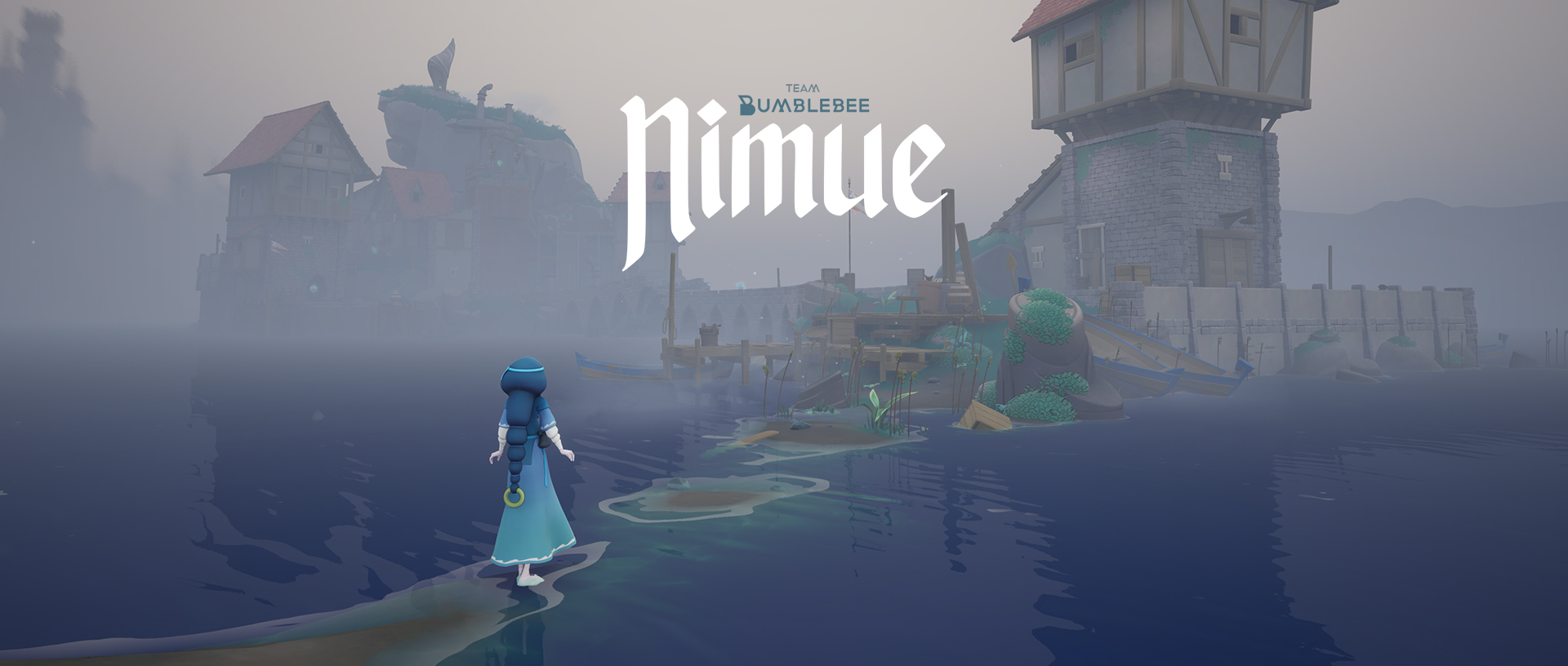

| Friedrich Wehrmann | Matr.Nr.: xxx0042 |
| Leanna Geideck | Matr.Nr.: xxx9529 |
| Stephan zu Münster | Matr.Nr.: xxx4264 |
| Saerochan Yun | Matr.Nr.: xxx3254 |
¶ Executive Summary
| Platform | PC (singleplayer) |
| Genre | 3D Platformer |
| Theme | Fantasy |
| Starting Semester | SoSe23 |
| Demo Release Date | July 29, 2025 |
¶
Short description
Nimue is an atmospheric 3D platformer that takes place on a mysterious lake in a distant past. Play as an enchanted princess who lost her memories and guide her through the foggy ruins. Can you find all the fragments of her past?
In the Demo, Nimue can collect magical water orbs to perform multiple bubble jumps to reach high places and explore her surroundings. Her goal is to regain the memories of her past life. There are three pieces of an object of her past hidden throughout the level.
With each fragment Nimue gets closer to discovering who she used to be and once she brings all three of them to the top of the mountain, she finally regains a part of her memory.
¶ Features
- Explore the mysterious lake town
- Use water magic to reach high places
- Collect memory shards to progress through the game
- Find hidden coins that pose an additional challenge
¶ Target Audience
Explorers & aesthetes, i.e. players motivated by discovery, mood, and visuals rather than purely challenge-driven gameplay.
Overlaps with fans of Journey, Ori, Rime, and ABZÛ.
¶ Background and Inspiration
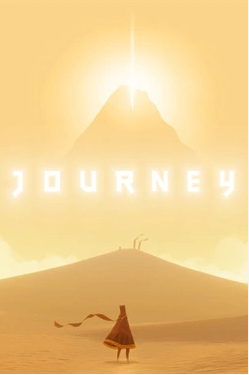 |
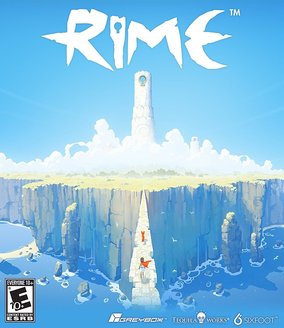
|
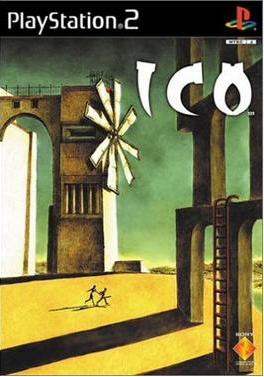 |
| Journey Thatgamecompany |
Rime Tequila Works |
Ico Japan Studio |
| Inpiration for: jump charge mechanic light platforming atmosphere |
Inpiration for: visuals water-aesthetic atmosphere |
Inpiration for: atmosphere setting |
¶ Gameplay and Mechanics
¶ Game Pillars
|
🌾 Mystical, calm atmosphere The world of Nimue is lonely, mysterious and a remnant of a distant time. |
➿ Satisfying movement and platforming experience How Nimue moves through the world and interacts with it is a key aspect of the platforming gameplay. |
🎨 Clean, recognizable art style Environment, prop and character designs as well as visual effects all adhere to an art style that is pleasing and cohesive. |
¶ Level Setup and Goal
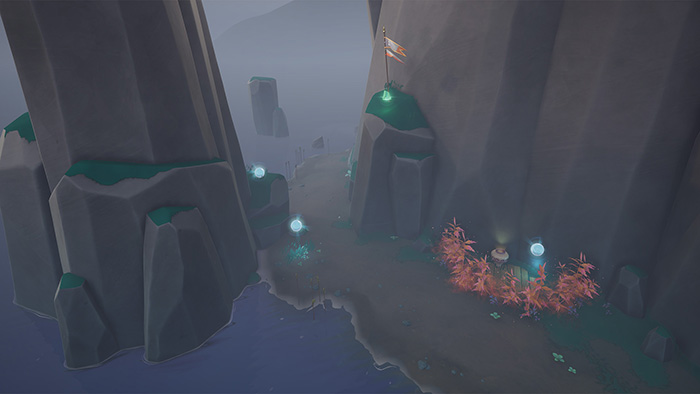
The game is made up of separate sections (islands), with the demo of the game spanning one such section. Each section has a predetermined number of memory shards (collectibles) scattered throughout the environment that need to be collected in order to proceed once the Memory Point at end of the section is reached.
¶ Memory Point
A Memory Point represents a key moment for Nimue's memory recovery process: With all the memory shards collected, she unlocks a piece of her past, bringing her closer to uncovering the truth about herself and the mystery of the lake.
Every time a Memory Point is unlocked by reaching it and having obtained all the necessary memory shards, the path onward is cleared and the player can proceed. If the player is missing one or more memory shards, they can backtrack through the level to find all of them.
¶ Power-Ups and Collectibles
.jpg)
¶ Power-Up: Charge Orb
When picking up a Charge Orb, Nimue gains the ability to perform an additional jump. This effect can stack when picking up multiple Charge Orbs, allowing Nimue to jump across large distances.
¶ Main Collectible: Memory Shards
Each section contains a unique set of memory shards that represent fragments of an object that are meaningful to the world and character of Nimue. Memory shards have a connection to Nimue's past. When reaching the end of a game section, the player needs to be in possession of all of the Memory Shards in order to unlock the section's memory.
¶ Optional Collectible: Coin
Insignia coins of the royal family. They are hidden in the environment and obtaining them is optional. Collecting all of them poses a meaningful challenge.
¶
Core Loop
↓ Encounter platforming obstacle
To continue onward, high or far-away platforms need to be reached
↓ Look for Water Orbs
Search the environment for water orbs to utilize them
↓ Utilize water orbs to overcome obstacle
Use the obtained Orbs to overcome the obstacle and continue onward
↓ Get Main Collectible
↻
↓ Reach memory point
At the end of the section:
(If in possession of all collectibles)
↓ Unlock path to next section
↻
¶ Mechanics
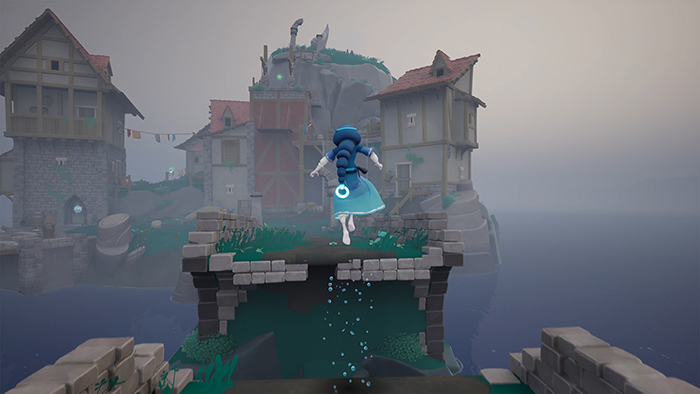
¶ Jump charges
The player can collect charge orbs that are placed throughout the level. Each charge orb gives Nimue an additional jump that can be chained after her regular jump, allowing the player to trigger multiple air jumps in succession. Each charge orb can only be picked up once until it is used - only once the charge is used, the corresponding charge orb replenishes.
¶ Main Collectibles and progression
In order to progress to the next section, all collectibles in the current section need to be collected. After having obtained all of them, the Memory Point at the end of the section gets unlocked and triggers a short story moment.
¶ Memory point and story moment
With all the main collectibles in her possession, Nimue is able to recall a part of her memory at an important location. This is represented by all the collectibles combining to form an important item, as well as a short text.
¶ Controls
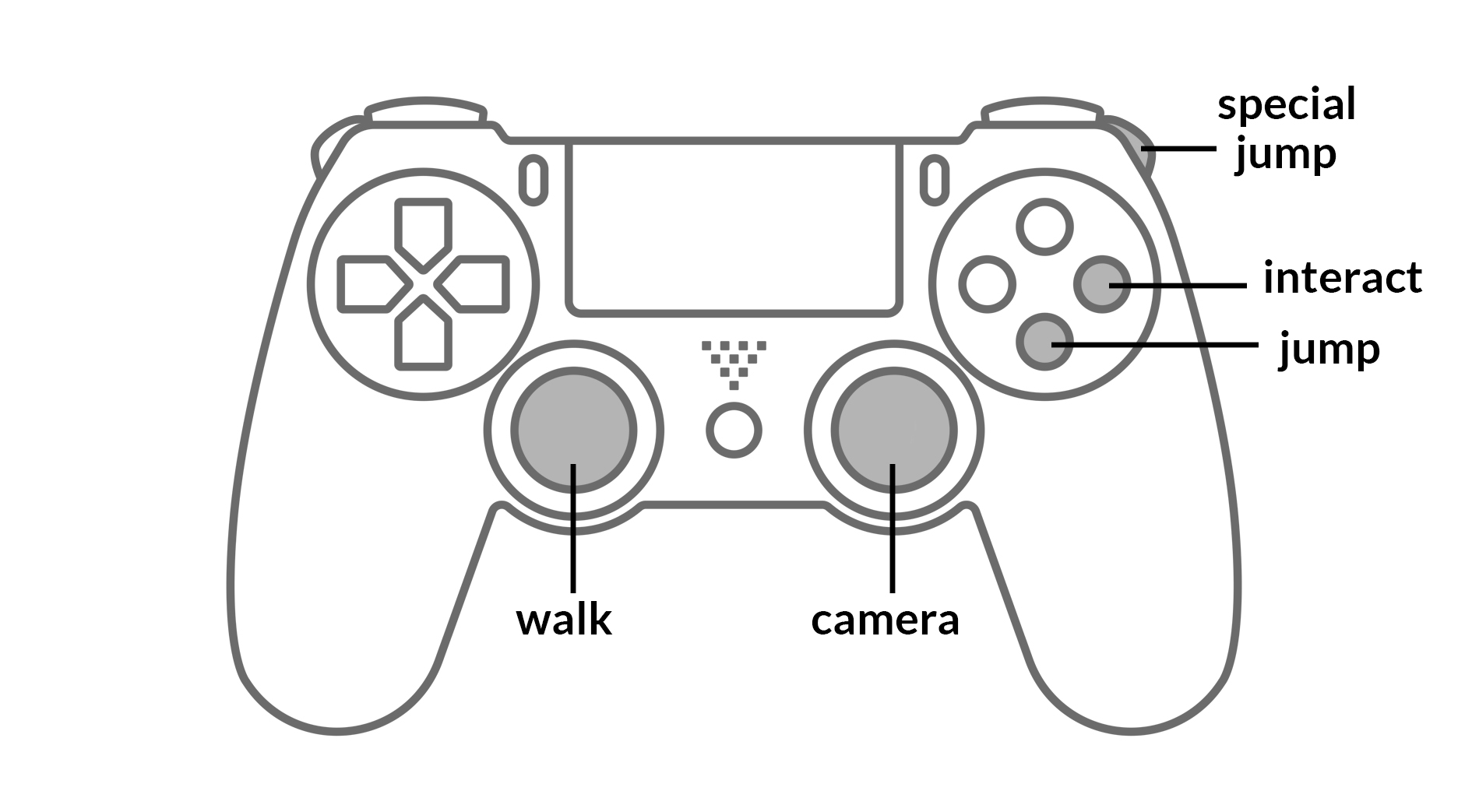
¶ Story
¶ Synopsis
As she awakens, she finds herself on the lonely shore of a quiet lake, with no memories to guide her. The tall tower at the lake's center calls out to her, drawing her in like a magnet. Along the way, she pieces together fragments of her past. Once a princess called Nimue, her story is tangled up with the lake's deity, but the details remain fuzzy. All she knows is that the tower holds the key to unlocking her forgotten tale. With each step towards the tower, Nimue unravels more of the mystery of her past. It's a journey filled with uncertainty, but she presses on, determined to uncover the truth hidden at the top of the tower.
¶
Story Inspiration
Nimue is inspired by folklore and tales of the British Isles, most notably the Arthurian Legend and the tale of The Weeping Mermaid of Loch Assynt.
In this tale the Chief of the MacLeods of Assynt makes a deal with the Devil: he gives away his daughter's hand in marriage in return for a castle. Distraught by this bargain she throws herself off the top of the castle tower on the day of the wedding. Out of anger the devil destroys the castle and the surrounding environment but the young woman is still believed to haunt the lake in the form of a mermaid. Her tears are said to cause the change in water level of Loch Assynt.
While the game's titular character is named after the Lady of the Lake from Matter of Britain, her story and haunting, mysterious atmosphere and the background story of her past is inspired by the Weeping Mermaid of Loch Assynt.
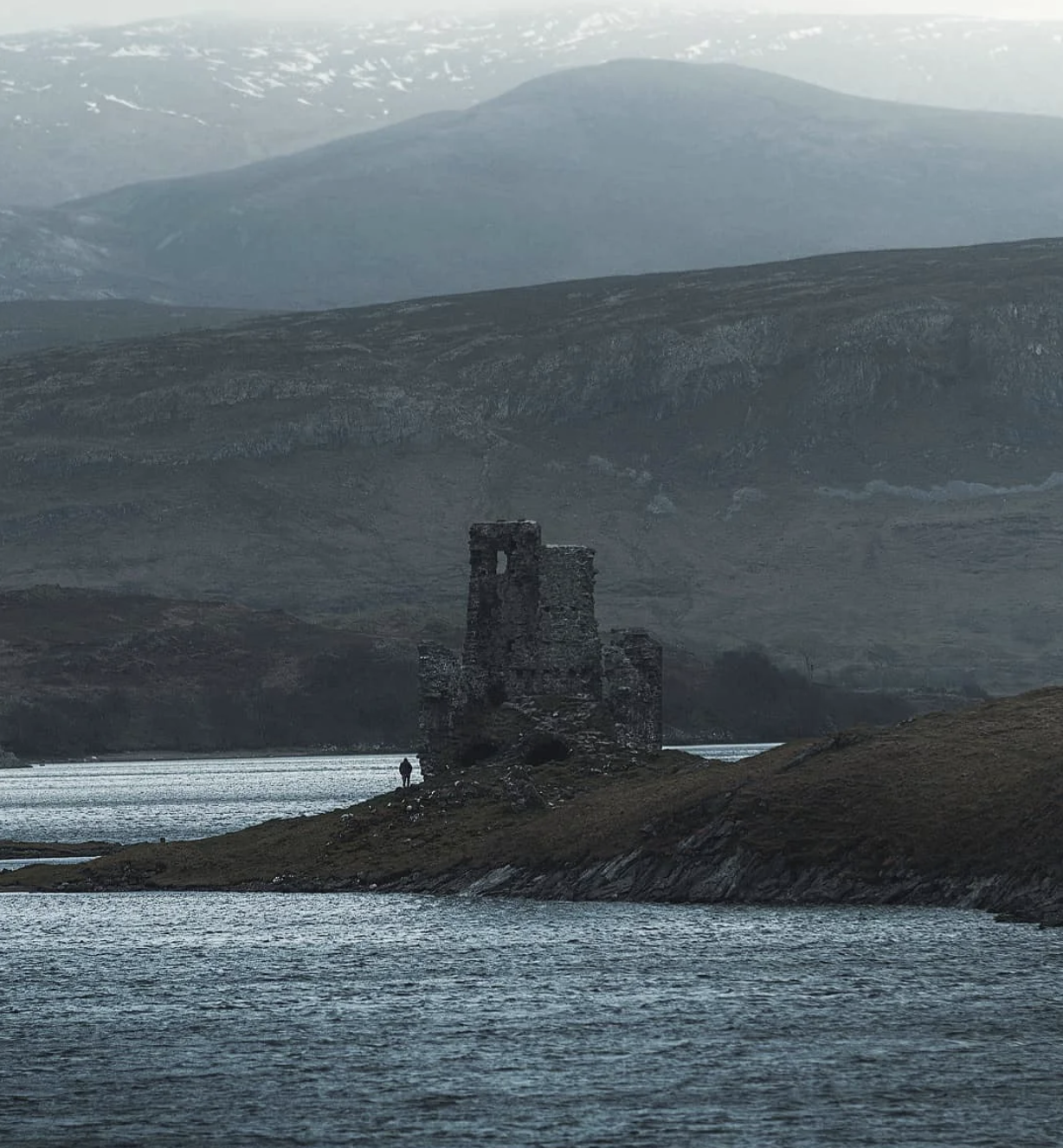
¶ Technical Highlights
¶ VR Level Blockout
The initial level blockout was created using the 3D modeling software Gravity Sketch for the Oculus Quest 2. The virtual reality aspect of this software made it possible to make quick adjustments and create basic organic shapes such as rocks more easily. After this initial phase in Gravity Sketch, the blockout was then tested in engine and used as a starting point for further iterations.
¶ Animations
For character animations we combined mocap data with motion matching to create fluid, responsive movement.
Mocap sessions provided a library of cleaned and retargeted animations, which the motion matching system used to dynamically select the best frames based on player input and trajectory. This allowed the character to retain the fluidity of recorded performances while adapting seamlessly to gameplay demands.
|
|
|
¶ Water Shader
We created the water shader using Unreal Engine’s physically-based Single Layer Water shading model as the foundation, combining it with distance fields for shoreline effects, layered noise functions to drive surface detail and variation, and depth-based modulation to blend color, opacity, and foam based on distance. For player interaction, we integrated Niagara particle systems for trails and splashes.
In cooperation with Kolja Bopp we published a detailed article about the creation of this water shader on 80 Level.
You can read the article here and download the shader on Gumroad here.
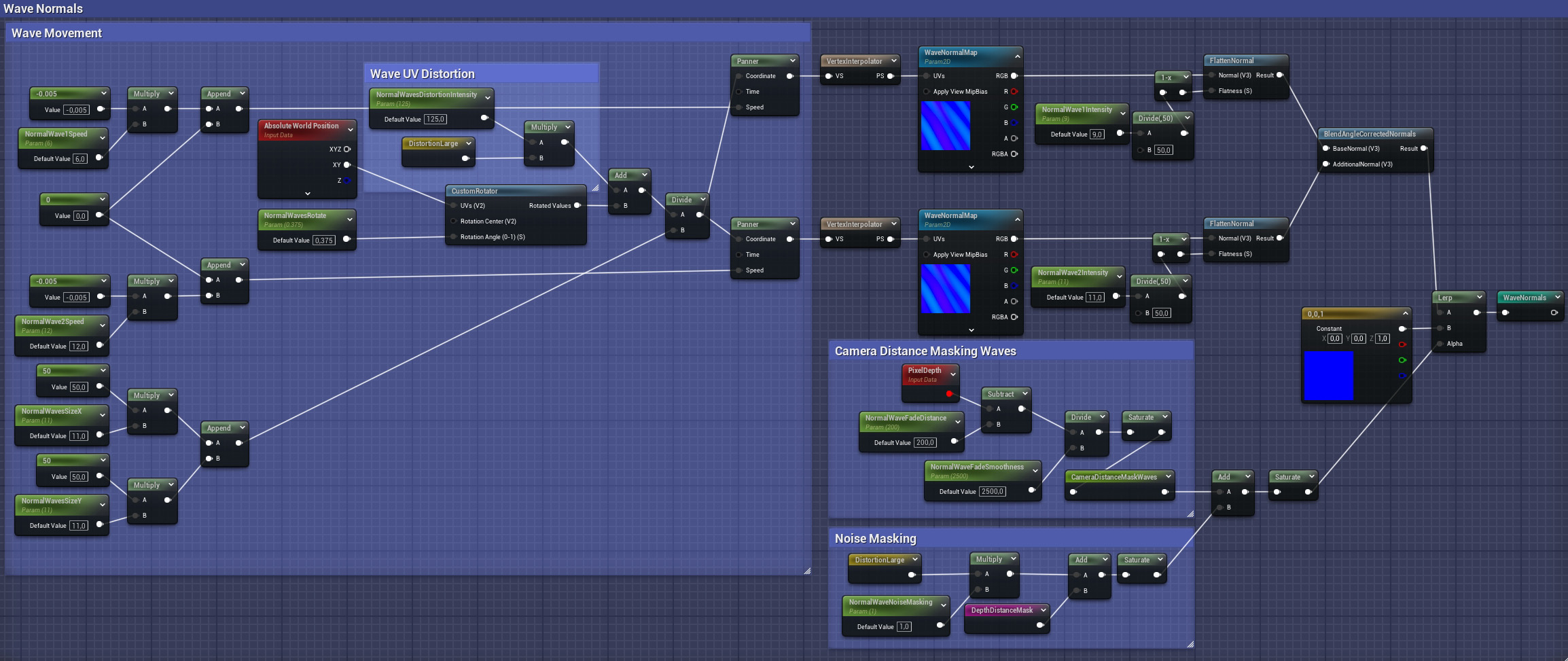
¶ Modular Houses
To better distribute work we set up a modular kit to build houses. These included assets such as beams, trims, walls, doors, windows, roofs and decoration. This kit was then used to build five different houses and easily adjust them according to the level terrain. In the final step we merged each house and manually skewed them in order to make them fit the art style of the rest of the environment.
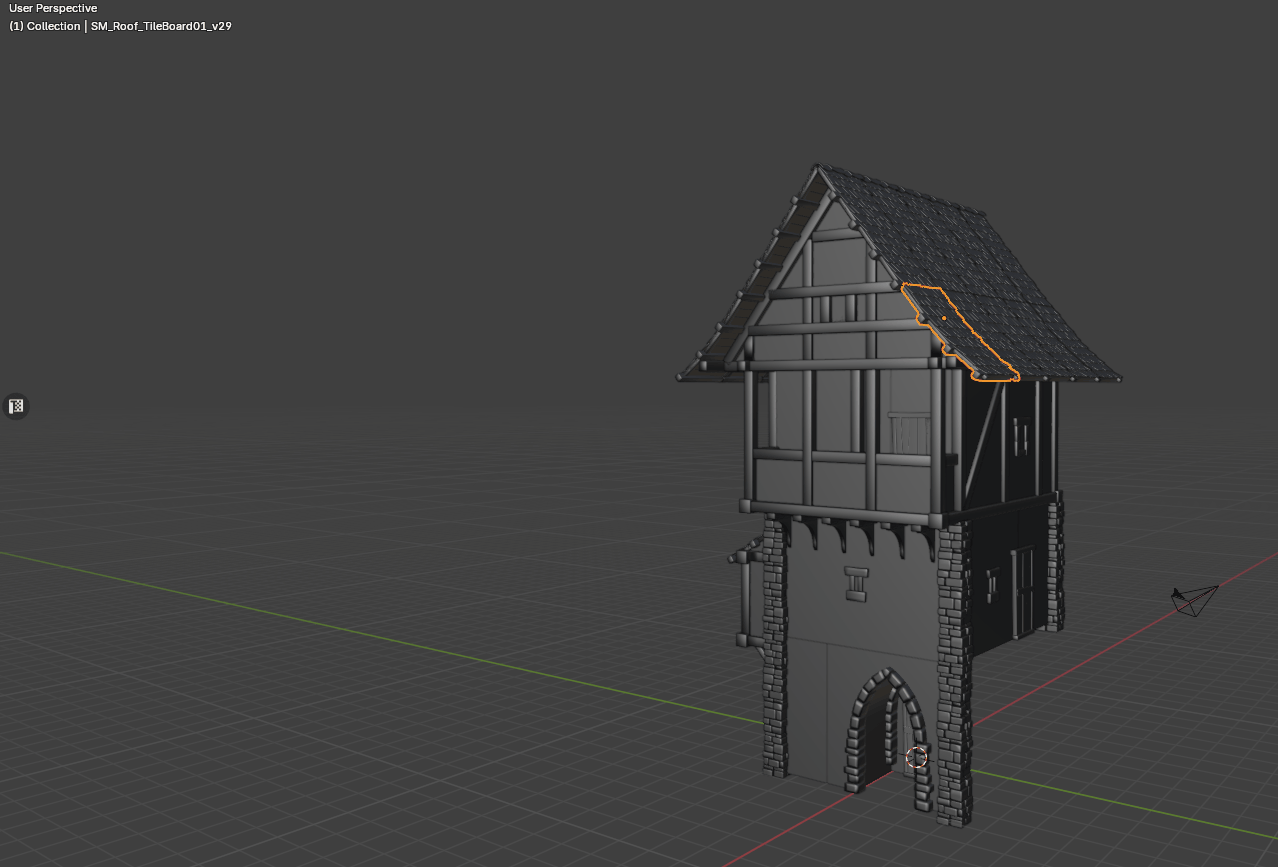
¶ Art
¶ Early Art
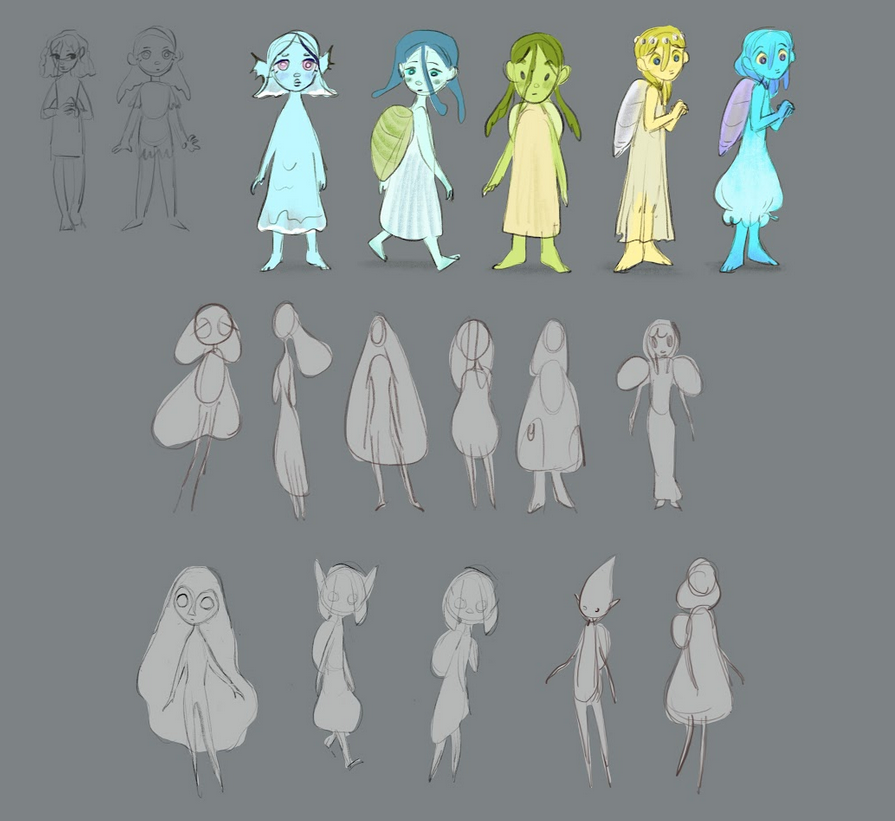 |
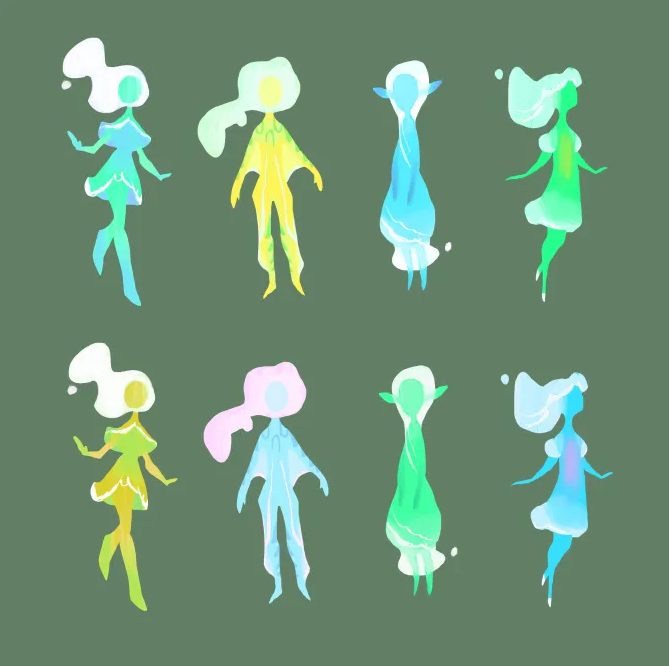 |
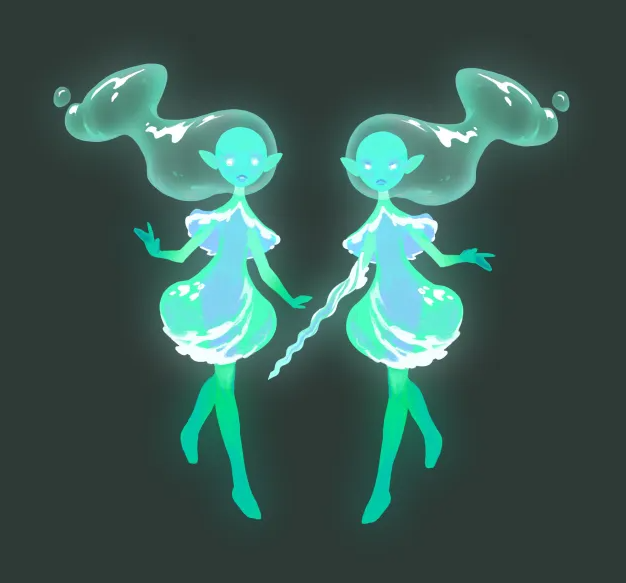 |
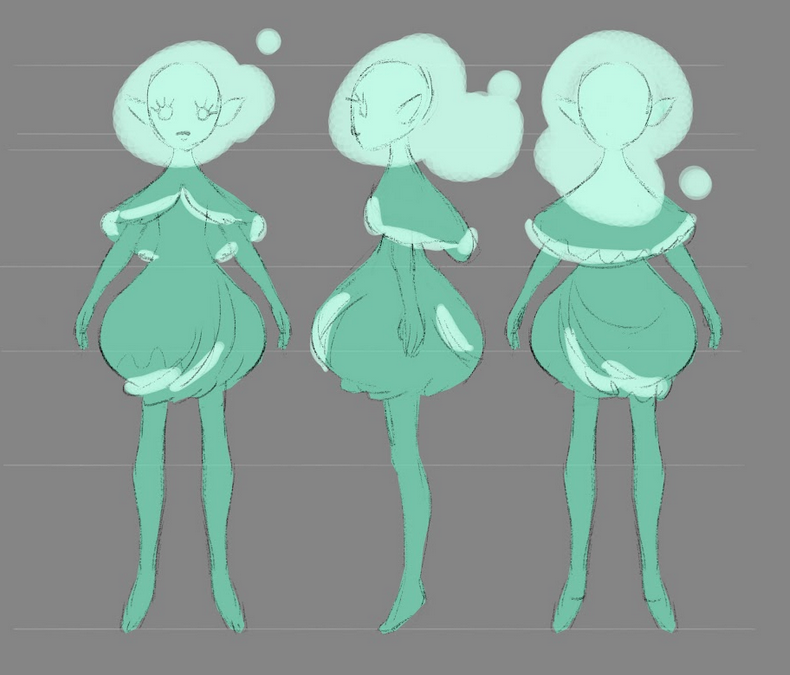 |
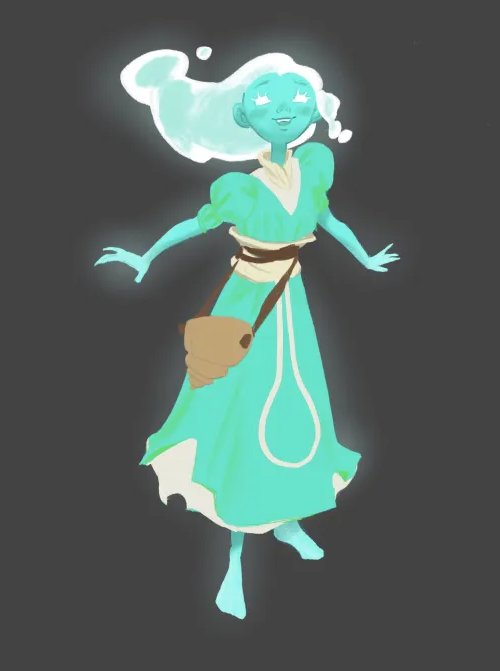 |
|---|---|---|---|---|
| First character exploration | Character exploration | Main character concept | Main character turnaround | Revised main character concept |
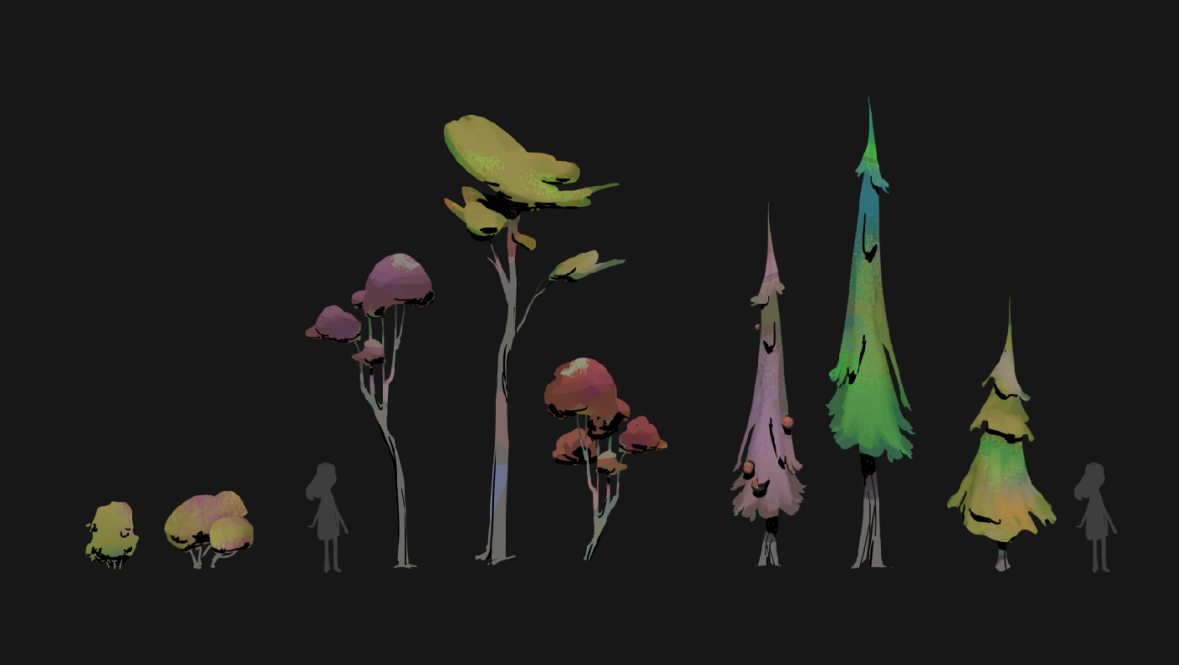 |
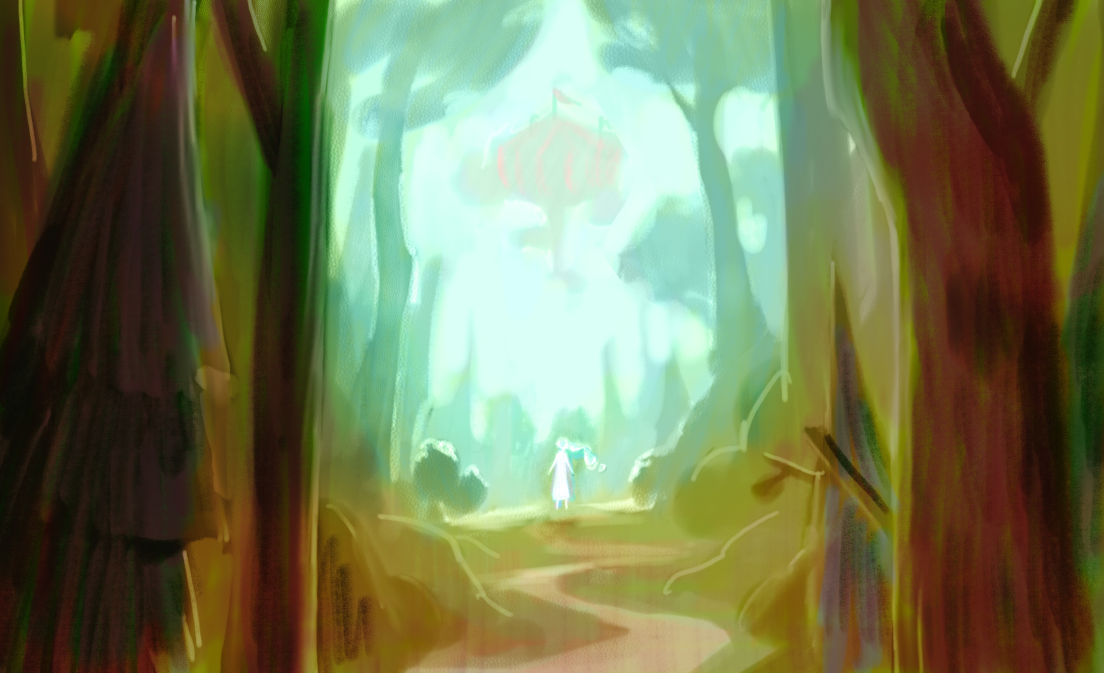 |
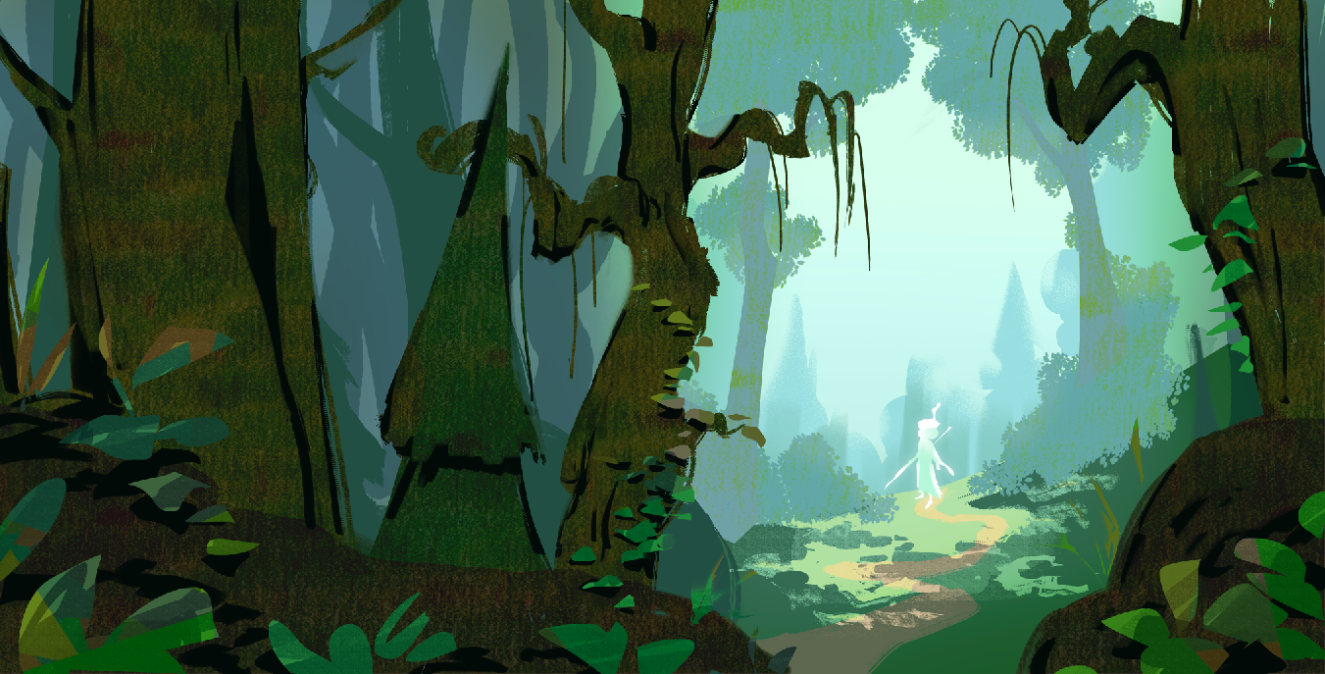 |
|---|---|---|
| Environment assets concepts | Rough environment/mood sketch | Unfinished environment/mood sketch |
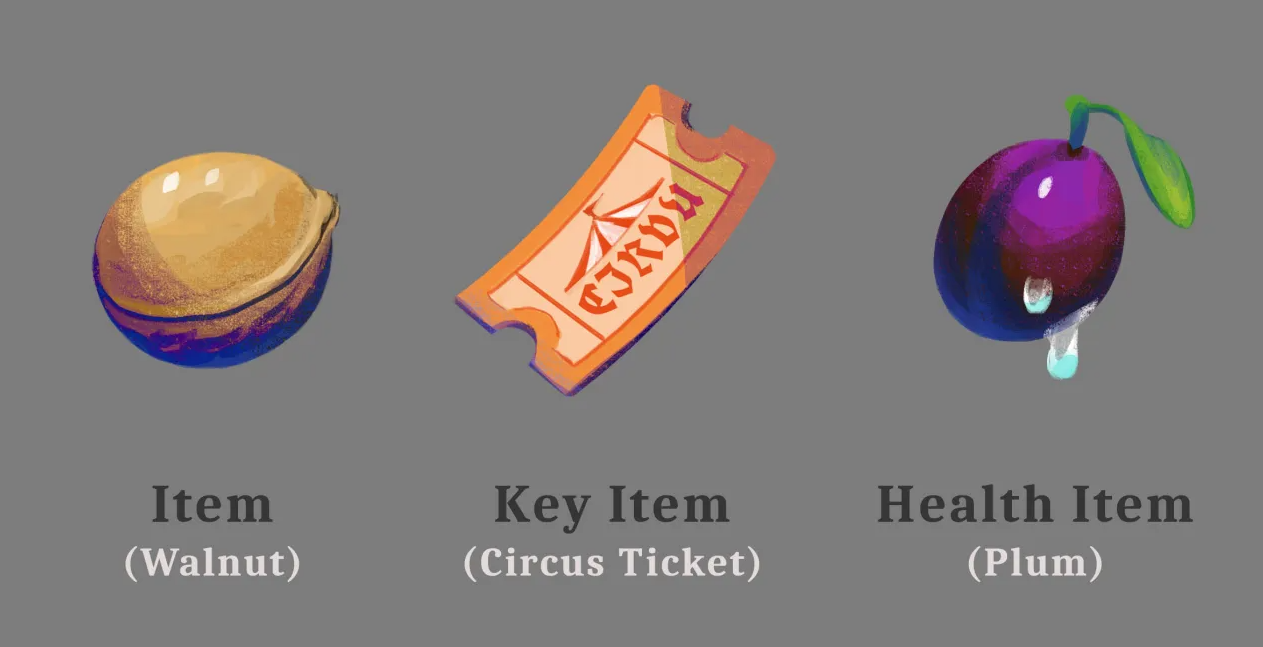 |
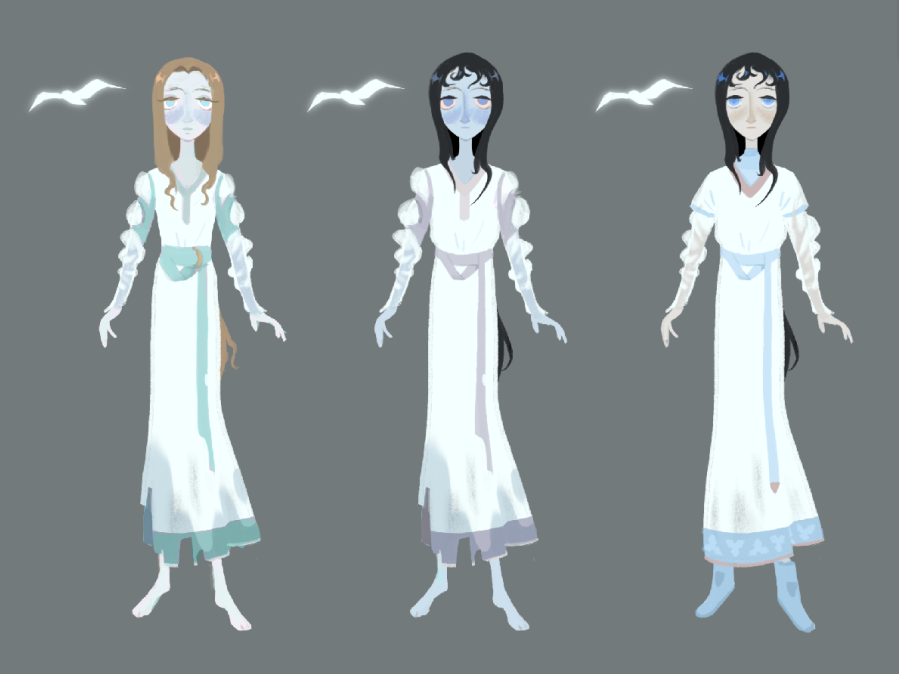 |
|---|---|
| Items concepts | Main character color variations |
¶ Artworks and Assets
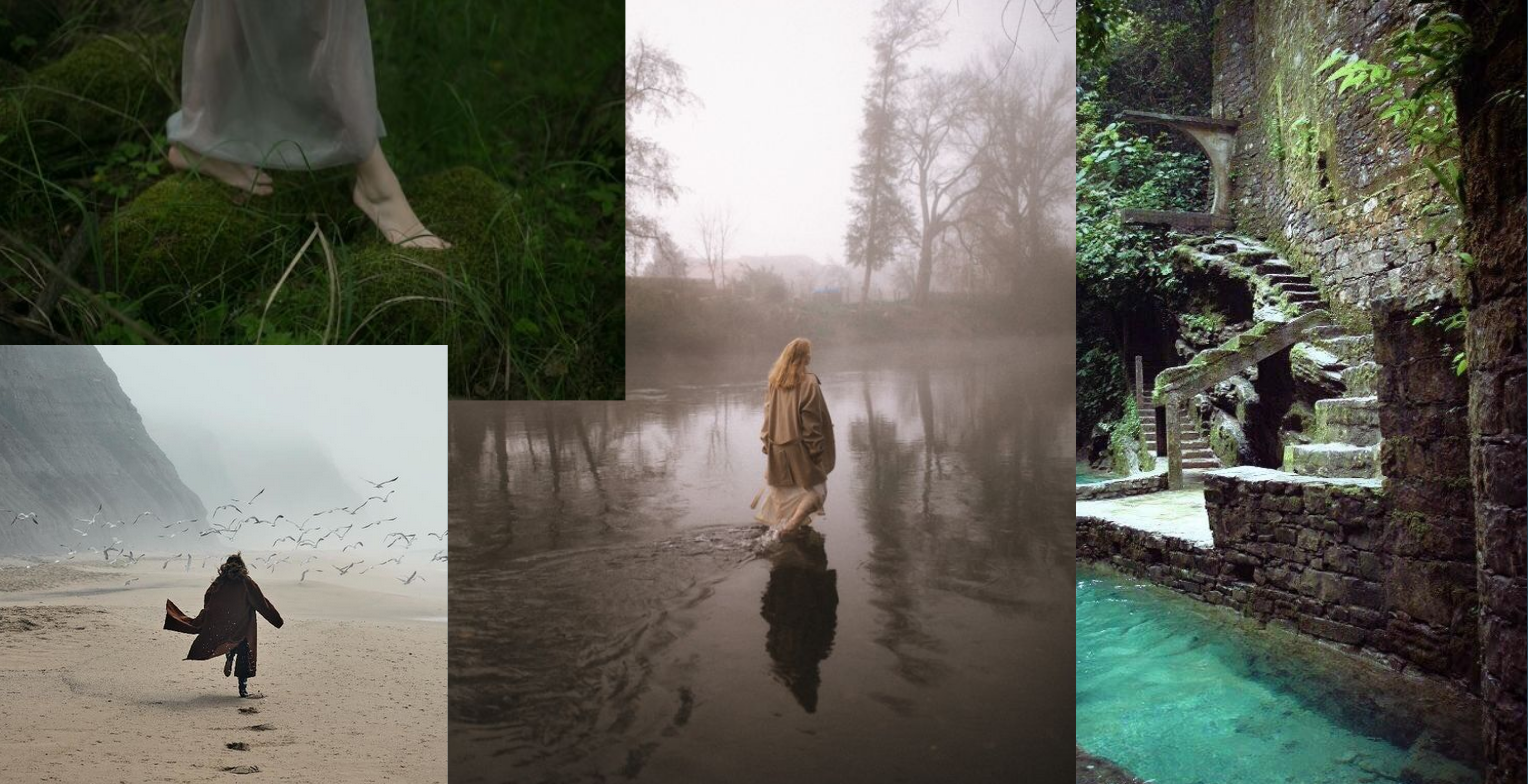 |
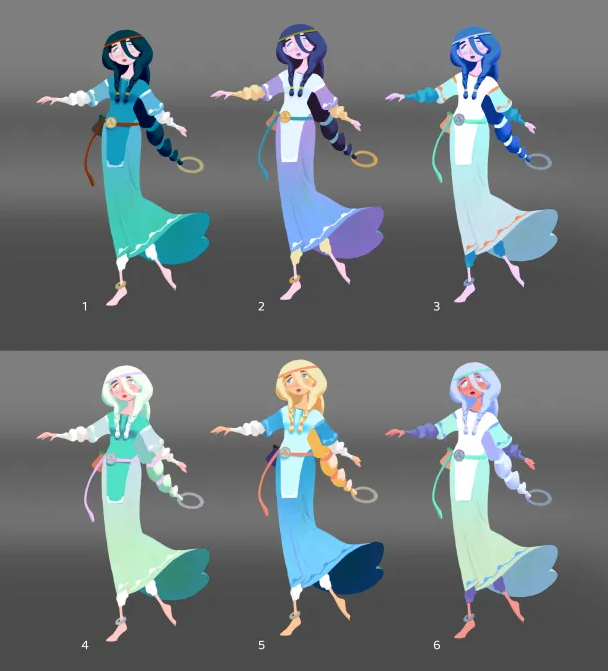 |
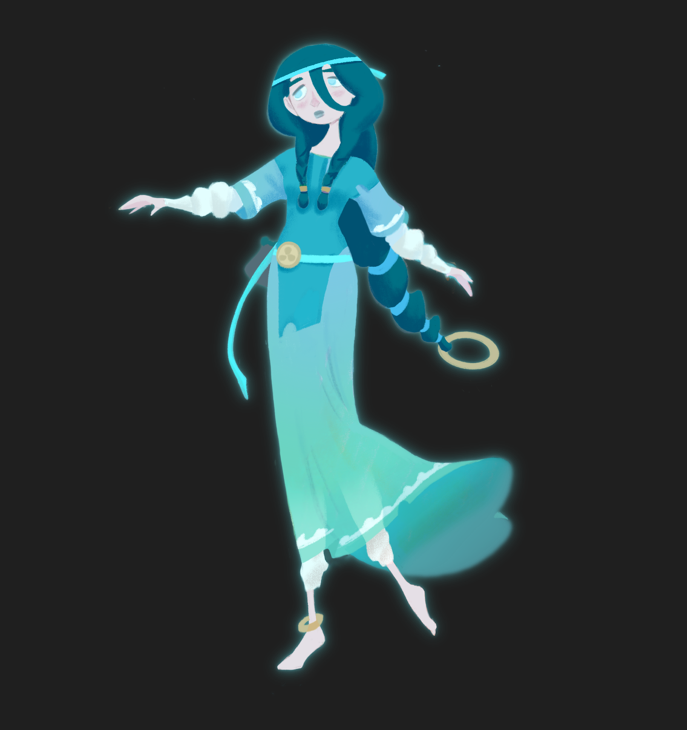 |
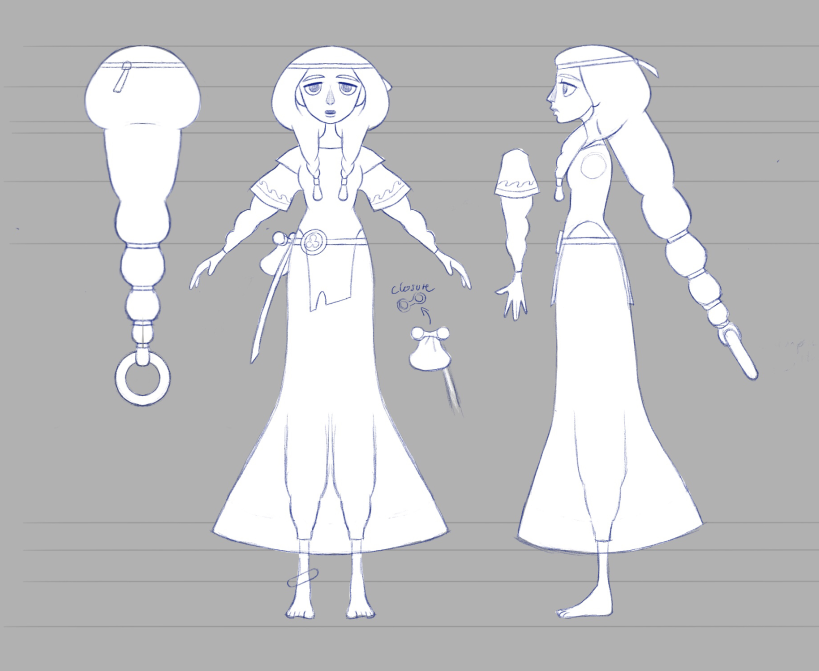 |
|---|---|---|---|
| Moodboard | Early Nimue character designs | Nimue final character design | Nimue character turnaround |
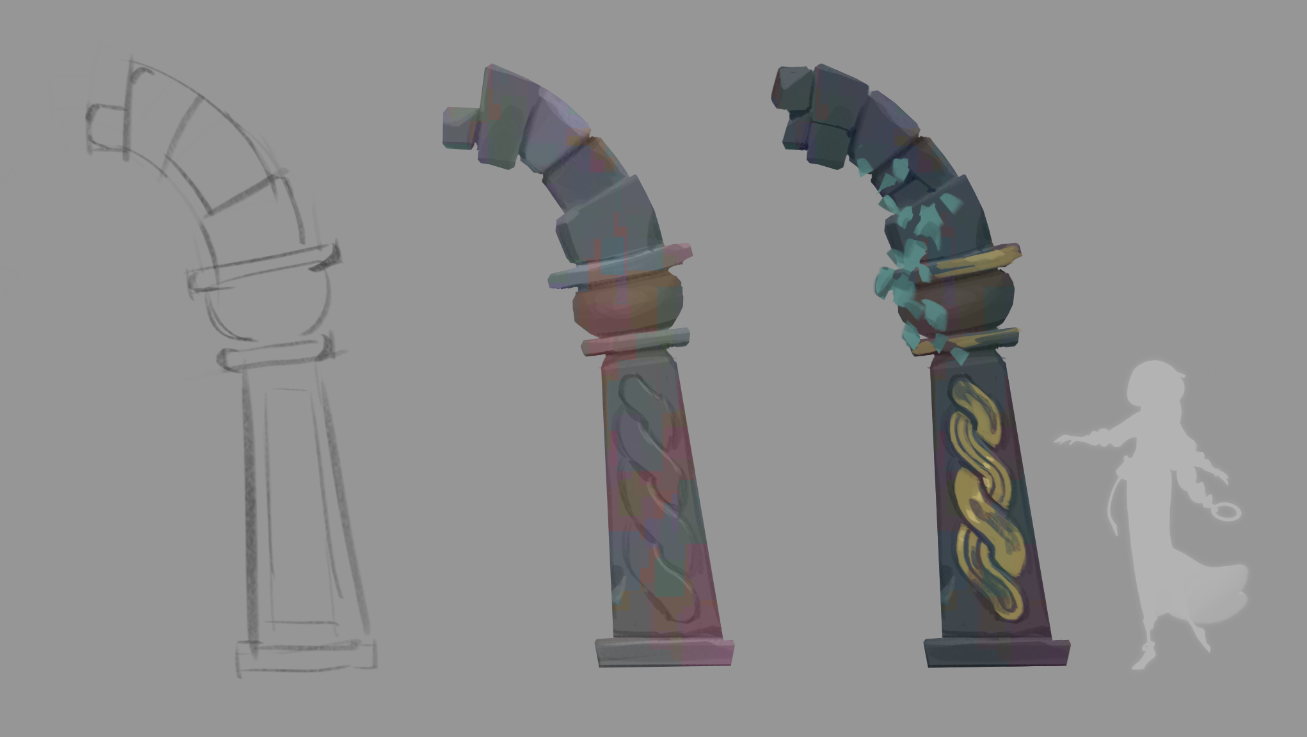 |
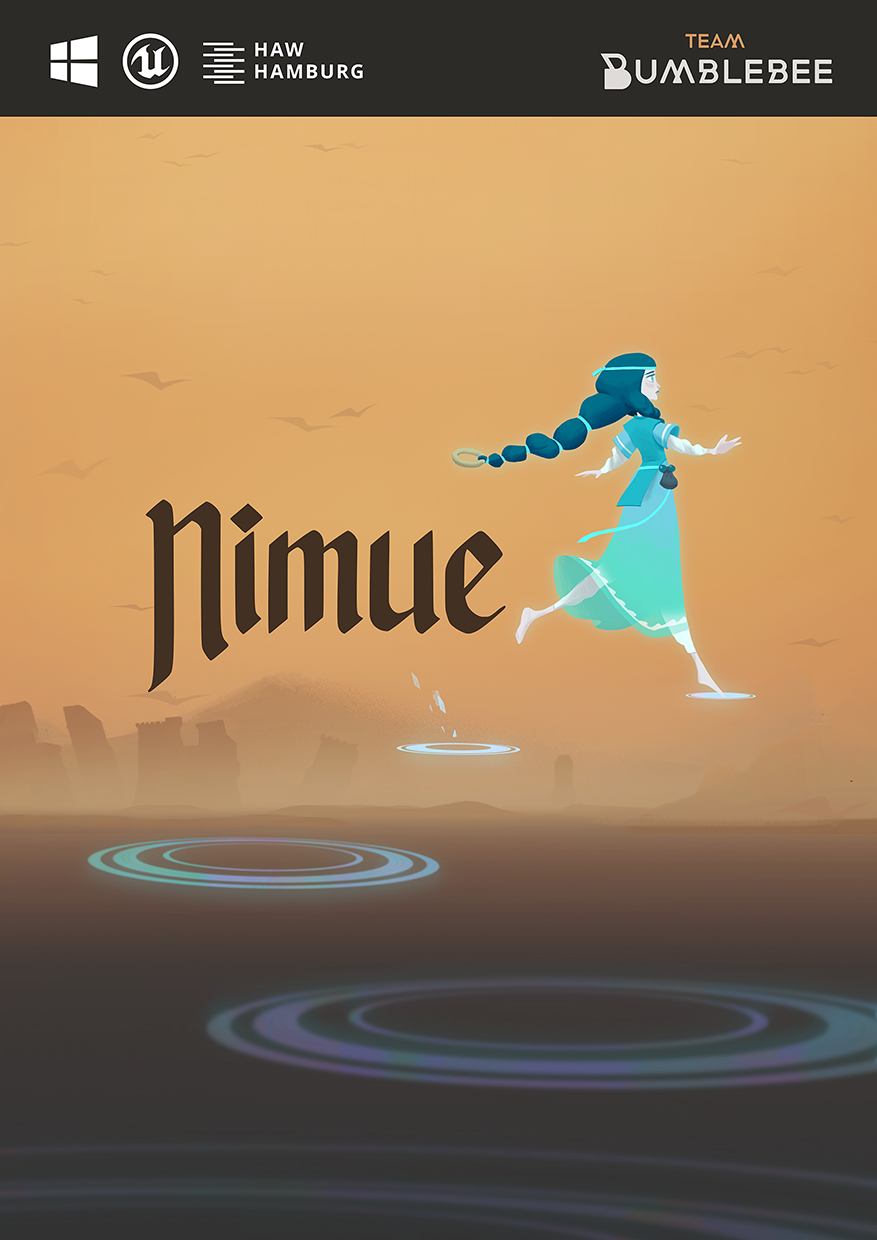 |
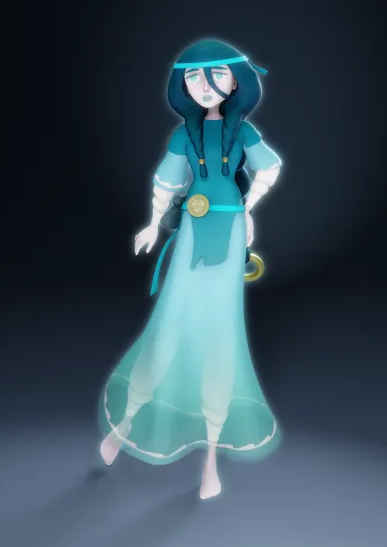 |
|
|---|---|---|---|
| Broken arch concept | Key art | Nimue 3D model |
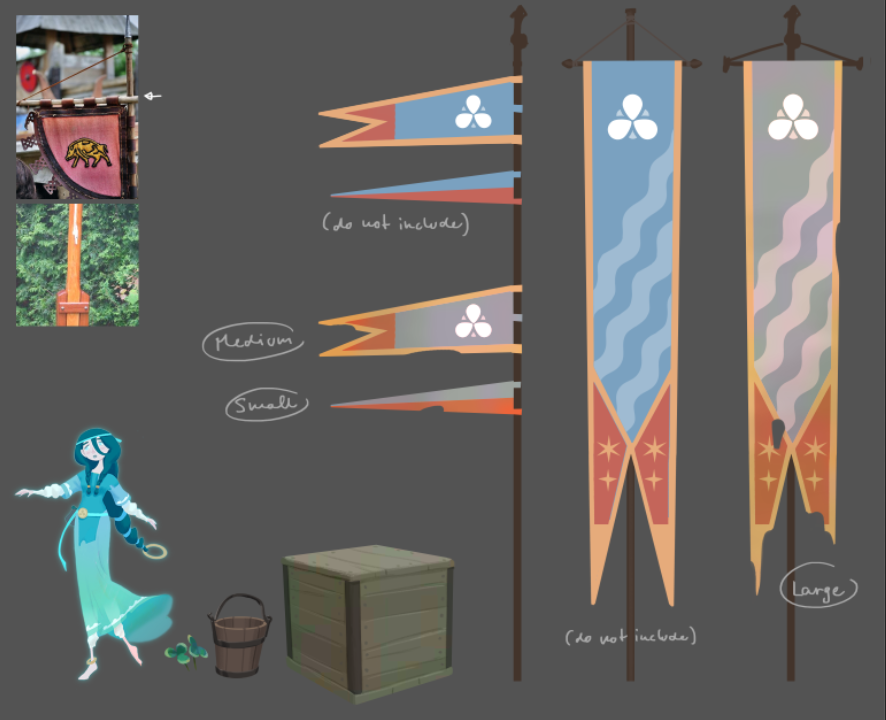 |
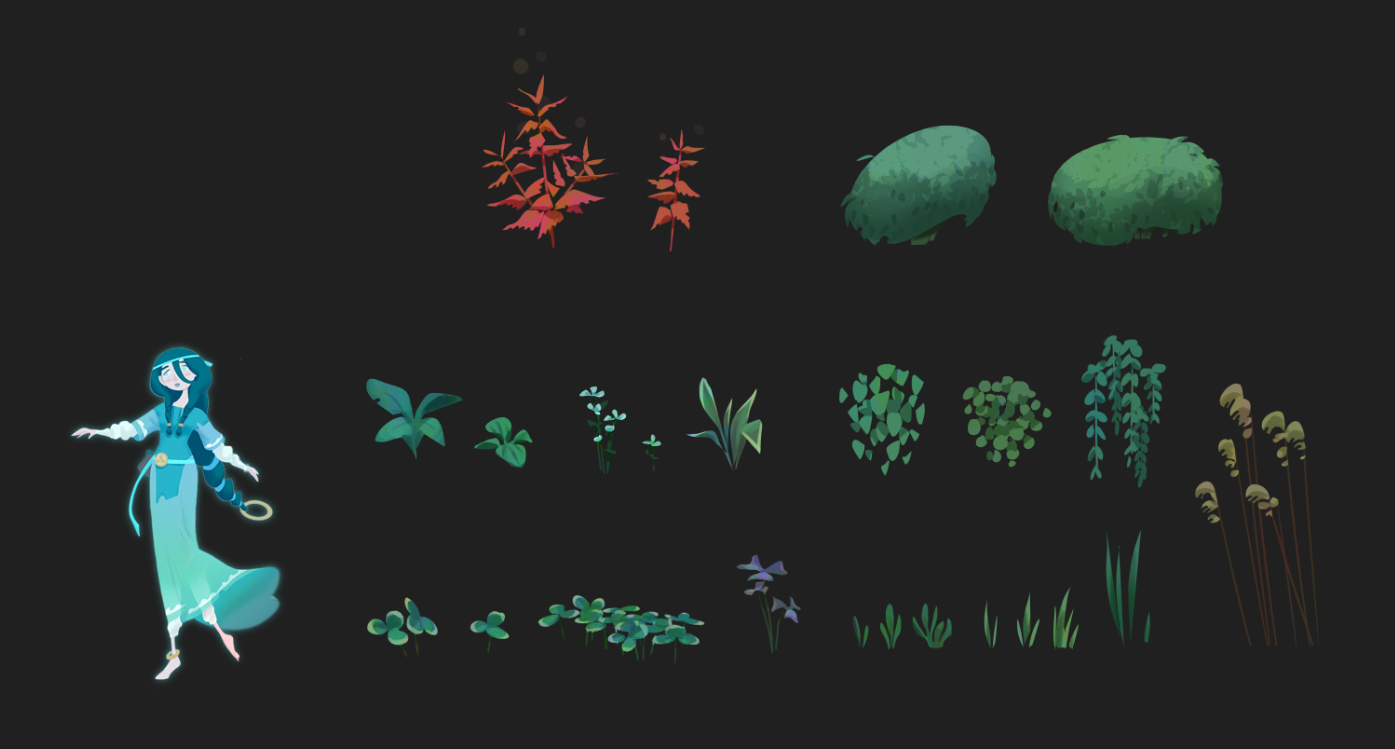 |
|
|---|---|---|
| Wall concepts | Plants concepts |
¶ Production
¶ MoSCoW Analysis
Green: achieved; light green: better version achieved
| Must have | Should have (Demo) | Could have (Demo) | Freezer (Full Game) | Won't have |
| Jump charges | Jump charge UI, Main collectible UI |
"Guide" Bird (highlight collectibles/secrets) | NPCs + Dialogue | Quests |
| Main collectibles (3-5) | Optional collectibles (coins) | Minimal enemies | Upgrades | |
| One section/level | Additional movement mechanic | More story via collectibles / other | Underwater gameplay | |
| Player character | Health, damage, hazards | Destructible objects (for hiding collectibles) | More power-ups | |
| Basic locomotion | Motionmatching locomotion | Intro animatic (2D story focus) | Interactive/reactive environment | |
| Pre-made animation | Custom animations | Additional level(s) | Climbing, climbing animation, climbable walls | |
| Background music | Main theme music (startup screen) | Main theme variation (story moment) | Light environmental puzzles | |
| Startup screen and main menu | ||||
| Foley, SFX and ambient sound | Additional environmental sounds |
¶ Roadmap and Milestones
Codecks was used as project management tool. Sprint meetings were held every two weeks. Additionally to the sprint decks a backlog deck and a bug deck were updated regularly to keep tab on other tasks.
Sprint Overview:
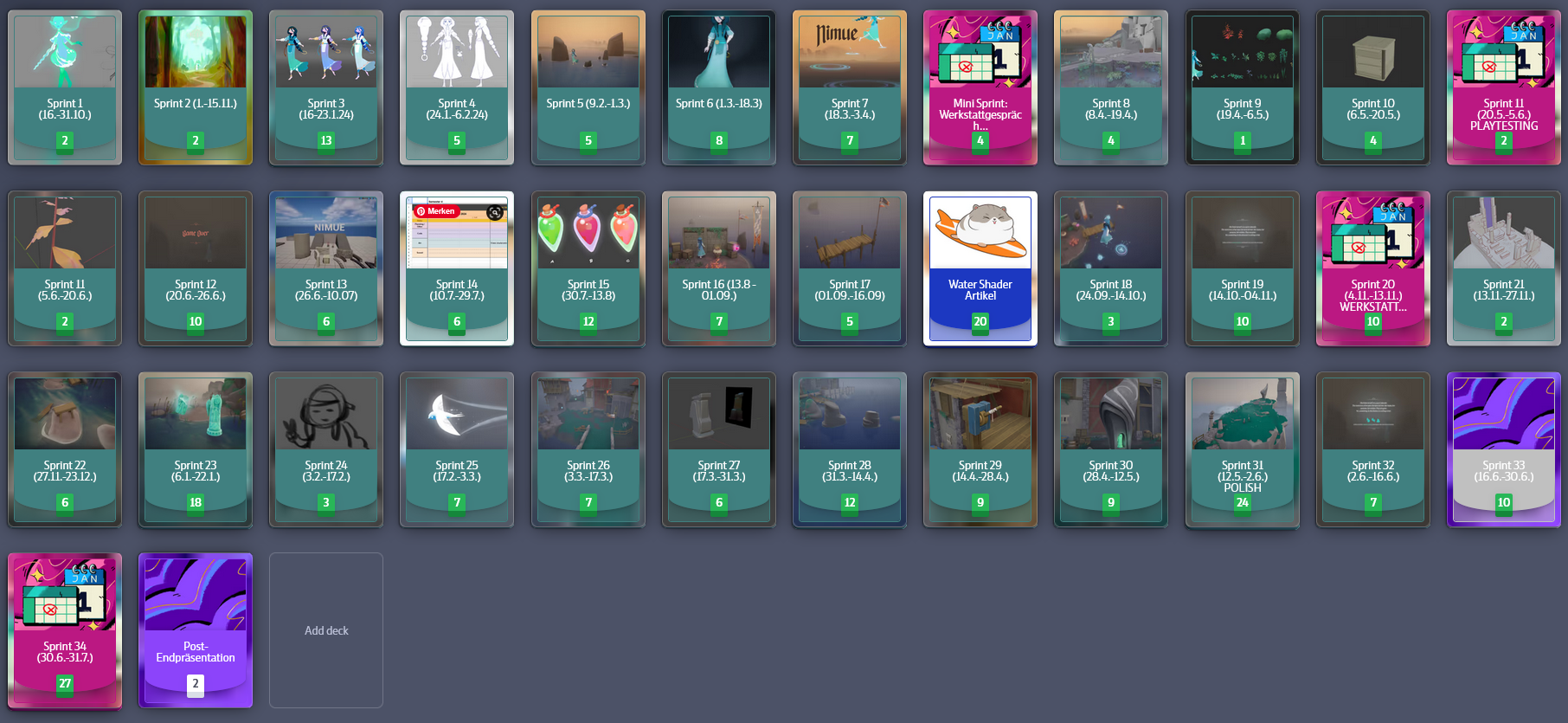
We used a separate roadmap to keep a more broad overview of the tasks and deadlines:

¶ The Team

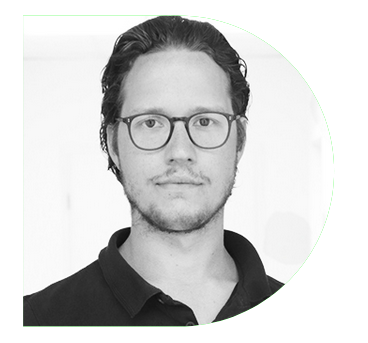 |
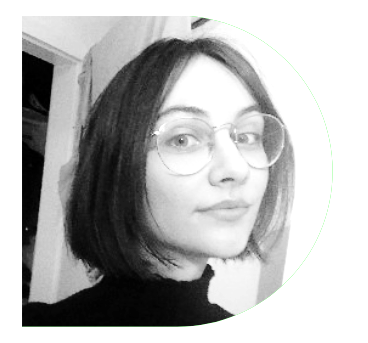 |
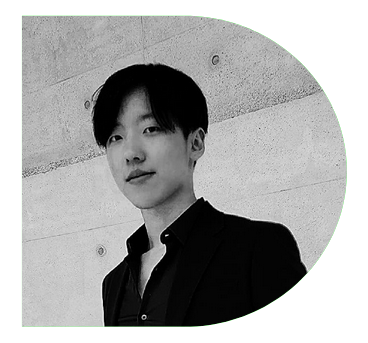 |
 |
¶ Friedrich WehrmannProgramming, animations |
¶ Leanna Geideck2D / 3D art, project management |
¶ Saerochan YunSound, music |
¶ Stephan zu Münster3D art, tech art, VFX |
¶ Resources
¶ Links / Downloads
Water Shader Article (80 Level)
Water Shader Download (Gumroad)
Outdated:
Werkstattgespräch 4 (presentation) (05.04.2024)
Werkstattgespräch 1 (presentation) (16.05.2023)
First GDD (pdf) (30.08.2023)
